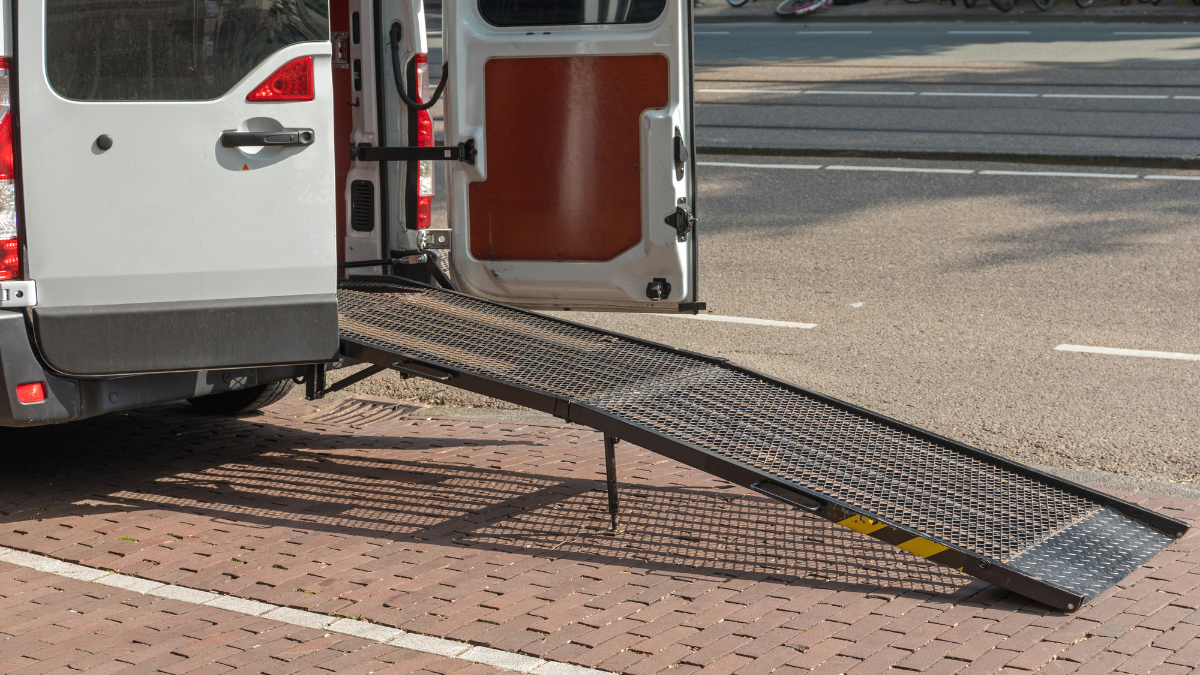When it comes to purchasing a wheelchair-accessible vehicle, one of the most important decisions you’ll face is whether to go with a rear-entry or side-entry conversion. Each offers its own set of advantages, challenges, and best-use scenarios. Understanding these differences can help you choose the right van for your needs—whether you’re a driver, a passenger, or a caregiver.
At Advanced Driving Systems, our mission is to make mobility solutions simple, personal, and accessible for every family. With two Florida locations in Tallahassee and Gainesville our staff steps in with decades of experience to help you make the right mobility van purchasing decision.
Below, we break down the pros and cons of each configuration, so you can make the most informed choice for you or your loved one.
What’s the Difference?
Rear-Entry Vans
- Allow wheelchair users to enter and exit through the back of the vehicle. A ramp is deployed from the rear, and the wheelchair user typically then rides in the middle of the van.
Side-Entry Vans
- Use a ramp or lift on the passenger or driver side of the vehicle. This configuration often allows the wheelchair user to ride in the front passenger position—or drive if the van is equipped with hand controls and other adaptive equipment.
Pros & Cons of Rear-Entry Vans
Advantages:
- Cost-Effective: Typically more affordable than side-entry conversions, both upfront and in long-term maintenance.
- Easy to Park: Because you don’t need space on the side for a ramp, standard parking spots can be used.
- Less Modification Needed: Rear-entry vans retain much of their factory structure and ride height, which can help maintain a smoother ride.
- Great for Rural Areas or Steep Driveways: No need for lowered floors or high ground clearance—rear-entry is often better suited for steep inclines or uneven terrain.
Considerations:
- No Front Seat Access for Wheelchair Users: The wheelchair position is usually in the center or rear of the cabin, limiting independent driving options or front-passenger access.
- Fewer Seating Configurations: Rear-entry vans often have less flexible seating, which may be a drawback for families who travel with multiple passengers. At both of our locations in Gainesville, FL and Tallahassee, FL our staff can review with you various seating solutions.
- Curbside Access Can Be Tricky: Because ramps deploy from the back, parallel parking or curbside drop-off can be more difficult.
Pros & Cons of Side-Entry Vans
Advantages:
- Driving Independence: Side-entry vans often allow the wheelchair user to access the driver’s seat or front-passenger seat. Some even include power transfer seats or hand controls. Advanced Driving Systems offers many vehicle conversion options.
- More Seating Options: These vans typically have removable or flexible front seats, plus additional seating in the second or third row.
- Great for Public Spaces: Designed to work well with curbside access and ADA-compliant parking spots that include extra space for ramp deployment.
- More Conversion Styles: Choose from in-floor or fold-out ramps, and manual or power-operated systems.
Considerations:
- Needs Extra Space to Deploy Ramp: Side-entry vans require a designated accessible parking spot with room to deploy the ramp.
- Higher Cost: Due to the complexity of the conversion, side-entry vans tend to be more expensive than rear-entry options.
- Ground Clearance Issues: Lowered floor conversions can sometimes make side-entry vans less ideal for rural roads or rough terrain.
Which One Is Right for You ?
Deciding between a rear-entry and side-entry wheelchair van ultimately comes down to your personal needs, lifestyle, and budget. If you’re looking for greater independence—such as the ability to drive or ride up front—a side-entry van is likely the better fit, offering more flexibility and access to the driver or passenger seat. Side-entry models are also ideal if you regularly park in ADA-compliant spaces and need easy curbside access. On the other hand, if you primarily travel with a caregiver or are looking for a more cost-effective option that’s easy to park in standard spaces, a rear-entry van may be more practical. Rear-entry vehicles are also well-suited for rural areas or steep driveways, since they typically retain higher ground clearance and don’t require extra side space. Think about how you use your vehicle day-to-day, your parking needs, passenger layout, and driving goals, to find the conversion style that truly supports your mobility and comfort.

Let Us Help You Decide
At Advanced Driving Systems, we’ve been helping families across North Florida find the perfect mobility solution since 1976. Whether you’re exploring your first accessible van or upgrading to a new model, our certified mobility consultants will walk you through every option available.
Visit our Tallahassee or Gainesville showrooms or contact us at info@ADSTally.com for a personalized consultation.








